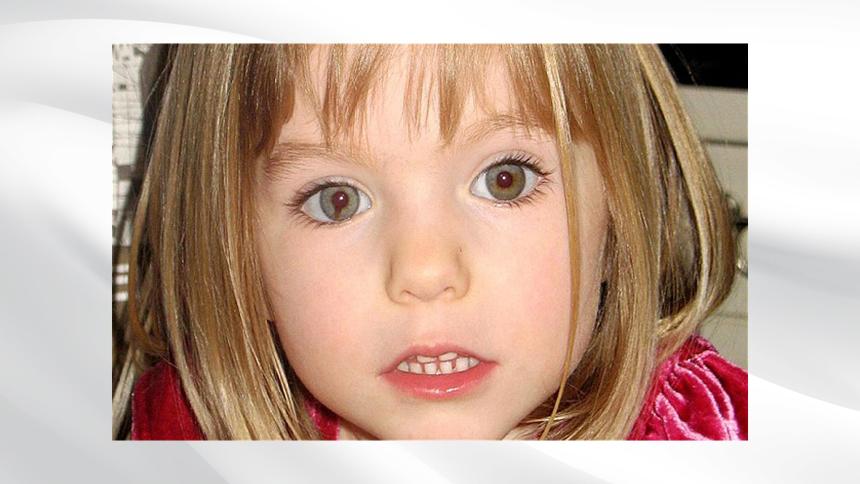
What do we learn from 'The Disappearance of Madeleine McCann?'
Netflix’s latest offering in the true crime oeuvre is The Disappearance of Madeleine McCann, an eight-part documentary series that comes two months before the 12th anniversary of the child’s disappearance.
You might have heard of it before it even made it to Netflix, which it almost didn’t. It’s a series that’s been controversial from the start. Gerry and Kate McCann have refused to be a part of it. They said in astatement that they didn’t see how it could help find their daughter and it could, in fact, actively hinder the on-going police investigation. It was commissioned in 2017 and in that time, it has faceddelays, the McCanns friends and family refused to take part, as, it was said, did some journalists who covered the case at the time. There wererumours the eight episodes could be reduced to one, or cut altogether. But it’s launched in its original format and promising an in-depth look into the case.
That, it does. The first episode recounts in detail what happened the night that Madeleine disappeared, with interviews from tourists who were also at the resort and helped in the search. You hear how Kate realised a window to the family’s holiday apartment was open and Madeleine was no longer in her bed. You hear how guests at the resort and locals rallied around to start the search. Journalists who were on the story from the beginning recall rushing to the scene, expecting Madeleine to be found hours later. Except, she wasn’t. It also explains why that might be, detailing mistakes in the investigation that happened from the outset, with experts and investigators that worked on the case discussing what exactly went wrong.
It looks into the theory that Kate drugged her children.
It takes it from there: the same forensic-level detail is applied to every aspect (and with eight hours of documentary to watch, you can imagine the detail it goes into). All the theories as to what could have happened to Madeleine are explored. Was she taken? Someone saw a man carrying a child in pyjamas and there is CCTV footage of a girl that looks like Madeleine in a petrol station with a woman. Were Kate and Gerry responsible? There’s the blood evidence found in the rental car, archive footage of the cadaver dogs alerting in the holiday apartment, at the rental car and on some of Kate McCann’s clothes. It looks into the theory that Kate drugged her children. Was there a sex trafficking ring involving millionaires who would buy children? Could she still be alive?
There’s also plenty of archive footage to fill each episode, including that of the McCanns, interviews from the time and re-enactments. There’s never-before-seen footage of Madeleine getting onto the plane and photos of her at the resort taken by other guests, guests who have their own accounts of the little girl.
For anyone that wasn’t around at the time or somehow wasn’t aware of what was going on, it’s a detailed recounting of what happened, the context of the crime and how the investigation progressed in what feels almost like real time. But does it show us anything we haven’t already seen before.
The Disappearance of Madeleine McCannmight not actually have any of the McCanns, but it does boast a long list of interviewees, including the Portuguese detective who was originally involved in the case, Gonçalo Amaral, who named Madeleine’s parents as ‘arguidos’: suspects. He was also sued by the McCanns for libel over a book he wrote that claimed that Kate and Gerry faked the abduction to cover up for Madeleine’s death.
Could Madeleine McCann have been snatched by a 'sex beast' in a surgical mask?
The interviews are what gives it its edge. As well as Amaral, one of the original suspects in the case Robert Murat also features, as does Sergey Malinka, the computer expert who was accused of covering for Murat.
The biggest reveal of all, though, comes from Jim Gamble, the senior child protection officer who worked on the UK’s first investigation in the case. He said that he believes Madeleine could still be alive and that he expects the case to be solved. He’s backed up by the documentary that tells of other tourists whose children woke up to find a man in their room wearing a medical mask. Could the same have happened to the McCanns? Could Madeleine McCann have been snatched by a 'sex beast' in a surgical mask?
When it comes down to it, though, the series doesn’t reveal anything that any true crime fan or someone with passing interest in the case wouldn’t already know. The information is already out there. This just lays it out neatly for you, all in one place, which is nothing if not handy.
For what it’s worth, Netflix never claimed otherwise. The people behind the series, Emma Cooper and Chris Smith, said in an interview with The Atlantic that it wasn’t supposed to uncover new information or reveal new suspects: it’s supposed to serve as a ‘forensic’ overview of the case. It doesn’t take a side; it just focuses on the facts. Which it does:The Disappearance of Madeleine McCann is eight hours of exactly that. Every last detail is raked over and held up for examination. Is that enough?
Watch it if you want a case file, but don’t expect to learn anything new or for an answer about what happened to Madeleine McCann—the series won’t give you either. It doesn’t offer any real answers.




